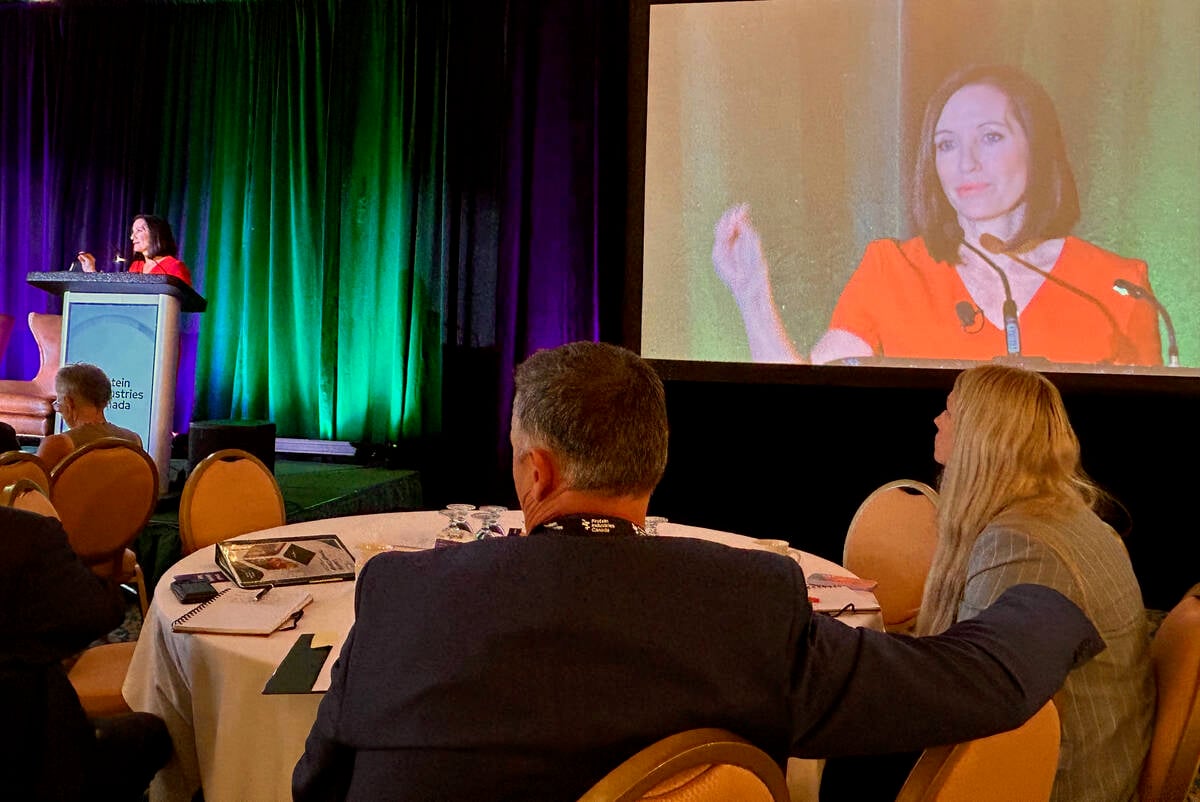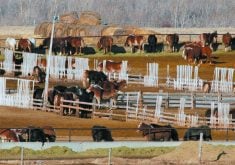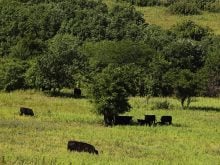Today, most large-scale producers have breeding soundness exams carried out on their breeding bulls yearly.
Almost every purebred 12- to 15-month-old bull calf will have a breeding soundness exam performed by a veterinarian.
The consistency of this exam is very good in the profession. The ReliaBull scrotal circumference tape has made scrotal circumference measurements accurate and consistent.
As well, breeding soundness evaluations can identify penis issues, most of which can be corrected. In the life of a breeding bull, penile problems can develop. Because of the value of the bull, medical or surgical treatment is often called for, and prognosis is often reasonable.
Read Also

Canada told trade crisis solutions in its hands
Canadians and Canadian exporters need to accept that the old rules of trade are over, and open access to the U.S. market may also be over, says the chief financial correspondent for CTV News.
Insurance companies require due diligence and that in some cases, treatments be attempted, if the overall prognosis is positive.
Large animal veterinarians must have some idea as to the cost and outcome of treatments and perform the tasks themselves or refer the procedure to another veterinarian, if necessary.
Sometimes, the goal is simply to collect semen for freezing.
The most common penile problems in young breeding bulls are frenulums, hair rings and penile warts.
To examine the penis for abnormalities, it is ideal to get protrusion. Some veterinarians sedate to ensure protrusion happens.
Most wart removals heal quite well and I am surprised by the outcome. However, if warts are wrapped around near the tip of the penis, it makes for a more cautious prognosis.
Depending on the potential value of the bull, more than one attempt to remove the warts can be made.
Sedate the bull, apply local freezing in most cases and be ready to ligate large bleeders or over-sew the cut. On the cuts, be cognizant of the urethra.
Most veterinarians who have purebred cattle breeders as clients will run into warts. They need to be indicated on the BSE form for full transparency and rechecked to ensure there has not been regrowth.
Penile problems on older breeding bulls originate from cuts, prolapses of the sheath and the rarer corkscrew and rainbow deviations.
Cuts require visualization to determine severity, using hydrotherapy if prolapsed, NSAIDs if found acutely and perhaps flushing of the area and time to rest and heal.
Rest from breeding will often yield an 80 percent prognosis on return to function. This is usually excellent news considering the value of most breeding bulls.
Often, we see unfound cuts that have healed from the year before, evidence that bulls have a great ability to heal.
With paraphimosis (a prolapsed sheath), hydrotherapy should be frequent. Once the penis can be retracted inside the sheath the bull must be given time to rest.
A severe, non-resolving prolapse of the sheath, or paraphimosis, may result in the need for a circumcision and although these are done infrequently, they can be curative and there are recognized techniques out there. Removal of the extraneous sheath and attaching the ends together is the technique in a nutshell.
We are taking an unusable bull and potentially giving it the ability to breed again. If it is able to return to function and breed, that is a good win.
If it remains unable to breed, slaughter for salvage is still in the cards.
When attempting these procedures, I find a tilt table with good access to the underbelly is best and standard aftercare may be successful.
In very valuable bulls, we are sometimes correcting the condition so good quality clean semen can be collected and frozen.
Outcomes for bovine penis issues are often favourable. Your veterinarian can provide an idea as to prognosis and the time period necessary. Since most of these cuts occur during the breeding season, it usually means the bull will have to wait until year’s breeding season to be bred again.
A veterinarian can provide a valuable service to your expensive herd sires.
Roy Lewis works as a veterinarian in Alberta.















